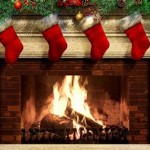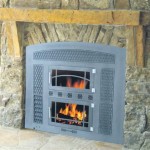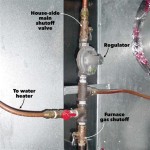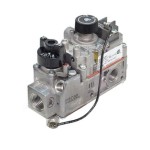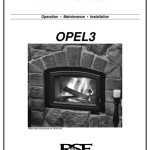Television Over Gas Fireplace: A Modern Design Consideration
The integration of a television above a gas fireplace is a popular design trend in modern residences. This configuration offers a focal point that combines entertainment with the aesthetic appeal and warmth of a fireplace. However, it also presents several considerations that must be addressed to ensure safety, functionality, and optimal viewing experience. This article will explore the key aspects of placing a television over a gas fireplace, focusing on heat management, mounting considerations, and viewing angles.
Heat Management and Television Longevity
The primary challenge in positioning a television above a gas fireplace is managing the heat generated by the appliance. Excessive heat exposure can significantly reduce the lifespan of a television, leading to component failure and screen damage. Modern gas fireplaces are designed with safety and efficiency in mind, often incorporating features that mitigate the upward flow of heat. However, the type of fireplace, its BTU output, and the distance between the fireplace and the television all contribute to the amount of heat that reaches the television.
Before installing a television above a gas fireplace, it is crucial to assess the heat output and airflow of the fireplace. Manufacturers typically provide specifications regarding the clearance required above the unit. Ensuring adequate clearance is the first line of defense against heat damage. This clearance may need to be greater than the manufacturer's recommendations if the fireplace is used frequently or for extended periods.
Supplemental heat management strategies include installing a non-combustible mantel to deflect heat away from the television. The mantel acts as a barrier, redirecting the rising heat outwards and reducing the temperature directly above the fireplace. The material and depth of the mantel are important considerations. A thicker mantel made of stone, concrete, or a similar non-combustible material will provide better protection than a thin wooden mantel.
Furthermore, internal cooling solutions, such as installing fans or vents, can help circulate air and dissipate heat. Small, quiet fans can be strategically placed to draw cool air from the room up and behind the television, preventing heat buildup. Vents can be integrated into the wall above the fireplace to allow hot air to escape into the surrounding room, minimizing its impact on the television. It is important to consider the aesthetic impact of these cooling solutions and to integrate them seamlessly into the overall design.
Selecting a television designed to withstand higher temperatures can also contribute to its longevity. Some manufacturers offer televisions with enhanced cooling systems or components designed to operate in warmer environments. While these televisions may come at a premium, they can offer increased peace of mind and a longer lifespan when installed above a gas fireplace.
Mounting Considerations and Wall Structure
Proper mounting of the television is essential for both safety and optimal viewing. The wall above a gas fireplace must be structurally sound enough to support the weight of the television and the mounting bracket. This typically involves securing the mounting bracket to wall studs, which provide a strong and stable foundation. If wall studs are not ideally positioned, additional framing may be required to ensure secure mounting.
The type of mounting bracket used will influence the viewing angle and the proximity of the television to the wall. Tilt mounts allow the television to be angled downwards, improving the viewing experience when the television is mounted higher than eye level. Swivel mounts provide even greater flexibility, allowing the television to be rotated horizontally. Full-motion mounts offer the most versatility, allowing the television to be extended away from the wall and adjusted in multiple directions.
When selecting a mounting bracket, it is crucial to consider the weight capacity and compatibility with the television's VESA mounting pattern. The VESA (Video Electronics Standards Association) pattern refers to the standardized hole pattern on the back of the television used for attaching mounting brackets. Ensuring that the mounting bracket is compatible with the VESA pattern and can support the weight of the television is essential for safety.
Concealing wires is another important aspect of mounting a television above a gas fireplace. Wires running down the wall can detract from the aesthetic appeal of the installation. To address this, consider running wires through the wall, using a cable management system, or concealing them within a decorative channel. In-wall rated cables are recommended for any wiring running inside the wall cavity to ensure safety and prevent electrical hazards.
Professional installation is often recommended to ensure that the television is securely mounted and that all wiring is properly connected and concealed. A professional installer will have the expertise and equipment necessary to assess the wall structure, select the appropriate mounting bracket, and address any potential challenges that may arise during the installation process.
Optimal Viewing Angle and Ergonomics
The height at which the television is mounted above the fireplace directly impacts the viewing angle and overall viewing experience. Ideally, the center of the television screen should be at or slightly below eye level when seated. Mounting the television too high can lead to neck strain and discomfort, especially during extended viewing sessions.
The distance between the seating area and the television also influences the optimal screen size and mounting height. A larger screen requires a greater viewing distance to avoid eye fatigue and maintain image clarity. Online calculators and guidelines can help determine the appropriate screen size and viewing distance based on the size of the room and the seating arrangement.
Tilting the television downwards can improve the viewing angle when the television is mounted higher than eye level. A tilt mount allows for vertical adjustment, ensuring that the screen is perpendicular to the viewer's line of sight. The degree of tilt required will depend on the mounting height and the viewing distance.
Consider the typical viewing habits and activities in the room when determining the optimal mounting height and viewing angle. If the room is primarily used for casual viewing, a slightly higher mounting height may be acceptable. However, if the room is used for more immersive viewing experiences, such as watching movies or playing video games, a lower mounting height is recommended to minimize neck strain and maximize visual comfort.
The overall design of the room should also be taken into account when determining the placement of the television. The television should be positioned in a way that minimizes glare from windows or other light sources. Window coverings, such as blinds or curtains, can help control the amount of light entering the room and reduce glare on the television screen.

3 Tips For Installing A Tv Over Your Fireplace

Tv Above Fireplaces Wall Mounted Gas Fire Modus

Tv Above Fireplaces Wall Mounted Gas Fire Modus

Can I Mount My Tv Above The Fireplace

Mount Your Tv Above The Rave Modern Gas Fireplace Linear

Tv Above Fireplaces Wall Mounted Gas Fire Modus

Should You Mount A Tv Over Fireplace

Ask The Experts Should You Install A Tv Over Fireplace

Can I Put A Tv Above Fireplace The Ultimate Guide Bonfire

Mount Your Tv Above The Rave Modern Gas Fireplace

